Long Eaton - West Park
w/e 13 August 2017
All of this week's pictures were
taken with a Kodak DX6490

Part 03 - Includes Trees 14 to 22
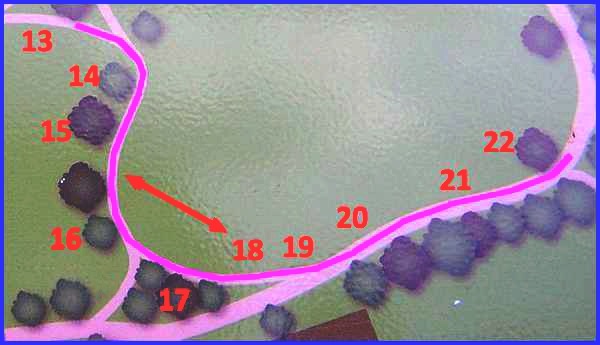
This third part of the series following Erewash Borough Council's
Tree Trail in West Park crosses the middle of the park and continues
along the south side as shown by the pink line above. Since starting
the series I've picked up an updated leaflet which although listing
most of the trees in the original version, shows slightly different
numbering. Due to some trees being removed and others planted,
some necessitated by vandalism, neither leaflet matches exactly
what we found on the ground so for that reason I've decided to
stick with the original leaflet and make the best of it. Number
13 in Part 03 was the missing Handkerchief Tree so we'll start
this part with number 14.
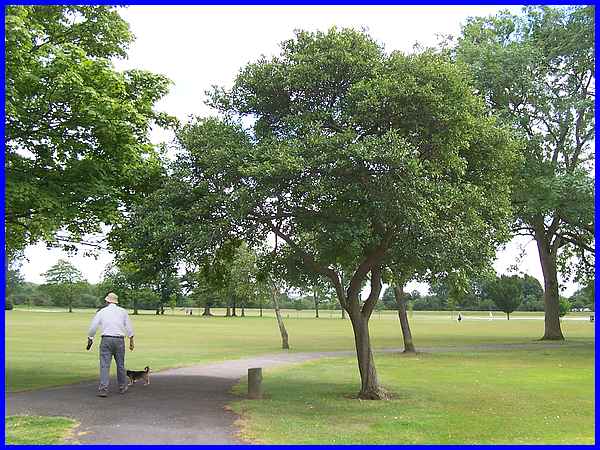
Number 14 on the Trail is a Broadleaf Cockspurthorn, a tough
spiny bush or small tree according to the leaflet. It also states
the in autumn the leaves change through yellow, orange and copper
to dark red but at the moment they as can be seen here, green.
|

A Common Ash stands at position 15 and is one of the last trees
to come into leaf. A native tree it can reach heights of 40m
and is the subject of much folklore. It was thought to have medicinal
and mystical powers whilst Vikings believed the world was held
in the branches of a gigantic Ash.
|
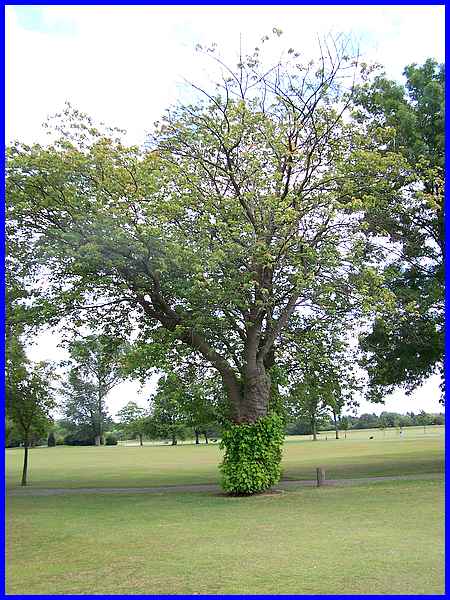
Next on the Trail at number 16 is a Silver Maple, this species
being a native of North America that is a fast growing tree sprouting
from its base to form lots of stems if it is not pruned. It is
also the source of sap that can be made into maple syrup, 70%
of the world's output coming from the province of Quebec. No
wonder the maple leaf is the symbol of Canada.
|
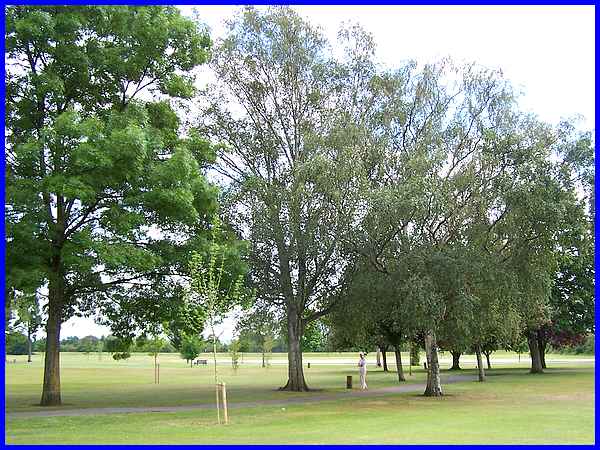
Now according to both leaflets the next tree on the Trail irrespective
of their numbers is a Purple-leaved Plum followed by a Silver
Birch. The fact is there are two Silver Birch trees either side
of the path before the Plum and at position 18, if there ever
was a Silver Birch there, there is now no sign of it. However
wherever it stands the Silver Birch is easily identified by its
silvery white trunk and in spring it is covered with yellow green
catkins.
|
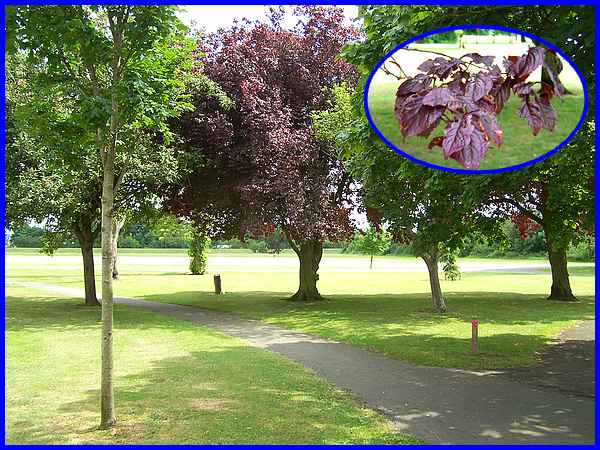
The aforementioned Purple-leaved Plum at position 17 is also
easily identified by its purple leaves and in spring it bears
pink buds that open to white flowers before turning to the purple
leaves.
|
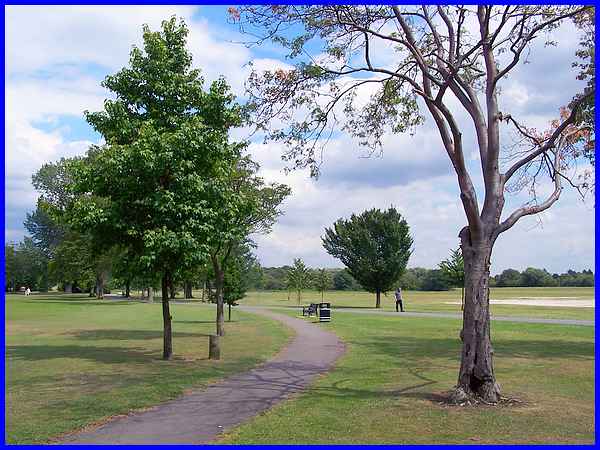
This sounds like a pop chart countdown but back on track at number
19 and complete with identification post is a Sweet Gum tree.
Introduced from Mexico as an ornamental tree it can grow to 25m
high and has bright autumn colours of scarlet, deep red, lemon
and purple leaves. Obviously we're here at the wrong time of
year!
|
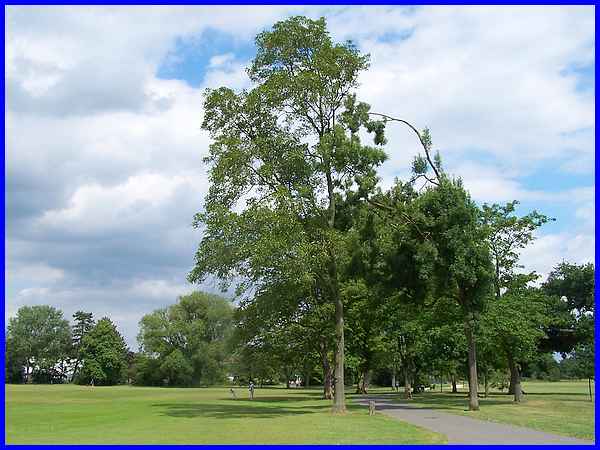
The next tree (number 20) growing to a similar height as the
Sweet Gum is a Single Leaf Ash which will top the Gum tree by
just a couple of metres. As the name suggests it is a variant
of the Common Ash having single rather than compound leaves.
|
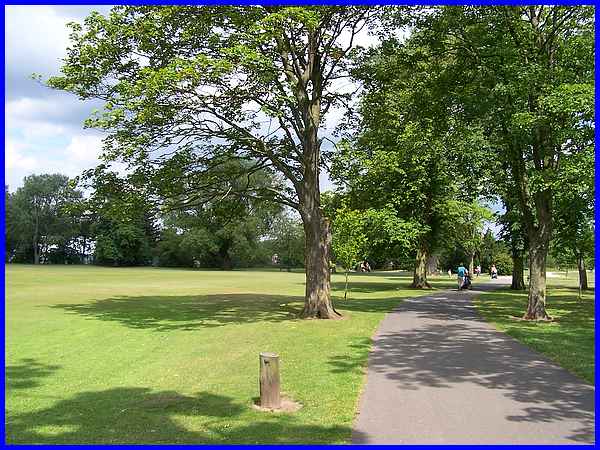
An identification post marks the position of an example of what
is said to be the oldest tree in the world - a Maidenhair Tree
at position 21. Maidenhair Trees are living fossils of what was
present when dinosaurs roamed the planet but sadly this specimen
has gone the same way as the extinct beasts.
|

The final tree (number 22) in this part caused a little bit of
consternation when we were on site. There was no identification
post and at first glance with "helicopters" on the
branches we thought it might be some sort of Sycamore. It is
in fact a Cappadocian Maple.
|
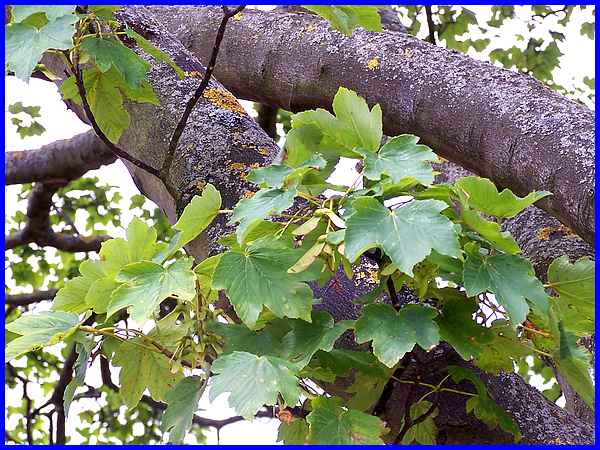
The leaves point to the fact that it is a Maple, it was the "helicopters"
that caused the confusion but re-reading the leaflet it states
that it has "a broad, rounded shape with a short trunk and
twisting branches." Grown for ornamental reasons and reaching
a height of 24m its name is derived from the mountainous central
region of Asia Minor which today is known better as Turkey.
|

